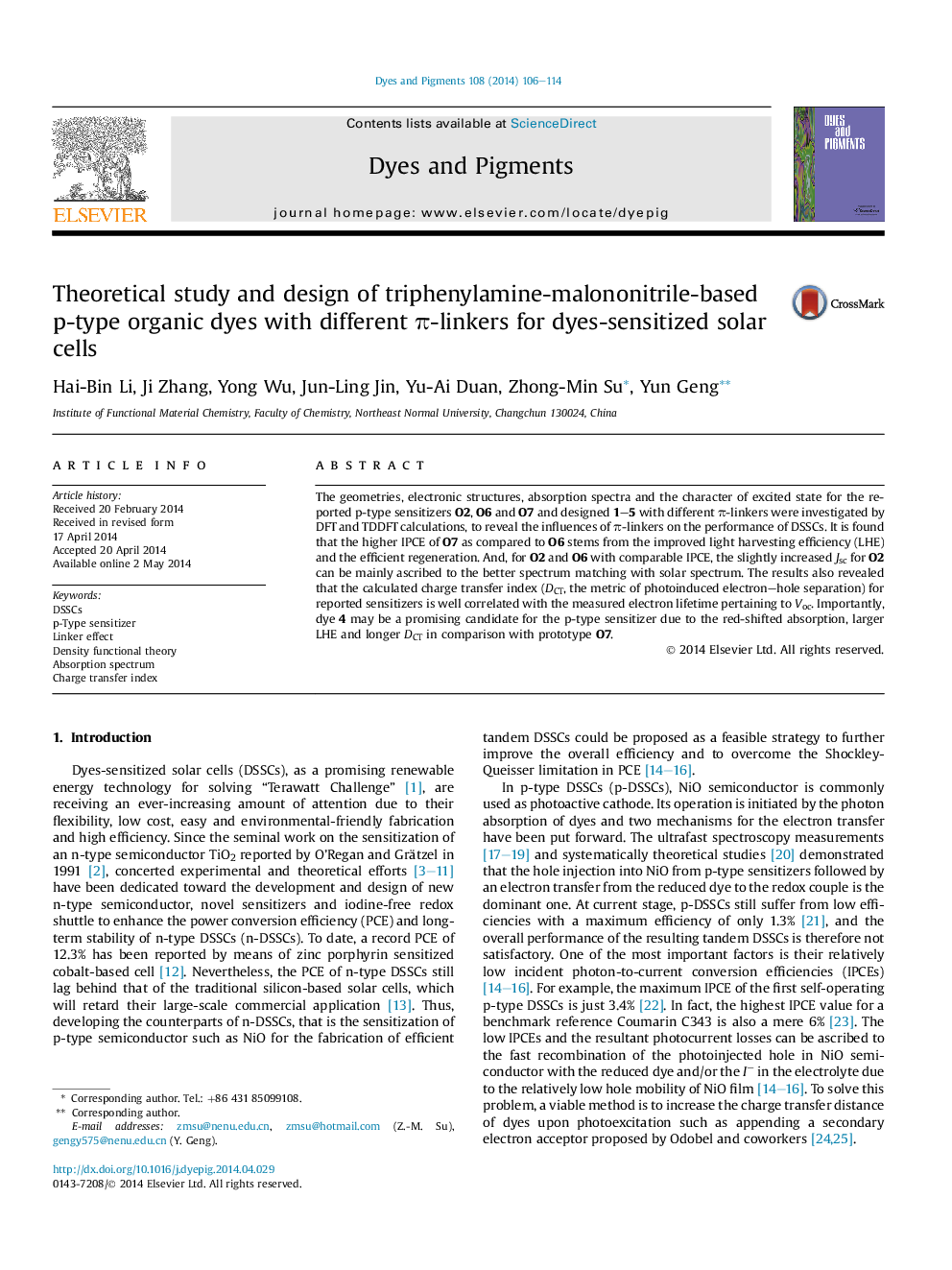| Article ID | Journal | Published Year | Pages | File Type |
|---|---|---|---|---|
| 176082 | Dyes and Pigments | 2014 | 9 Pages |
•The π-linker effect on p-type DSSC performance was evaluated theoretically in detail.•The calculated charge transfer index is correlated well with the electron lifetime of dyes.•The high IPCE of O7 is due to the efficient regeneration and improved LHE.•The designed dyes all show the red-shifted absorption and larger LHE than O7.•Dye 4 is a promising candidate for the p-type sensitizer.
The geometries, electronic structures, absorption spectra and the character of excited state for the reported p-type sensitizers O2, O6 and O7 and designed 1–5 with different π-linkers were investigated by DFT and TDDFT calculations, to reveal the influences of π-linkers on the performance of DSSCs. It is found that the higher IPCE of O7 as compared to O6 stems from the improved light harvesting efficiency (LHE) and the efficient regeneration. And, for O2 and O6 with comparable IPCE, the slightly increased Jsc for O2 can be mainly ascribed to the better spectrum matching with solar spectrum. The results also revealed that the calculated charge transfer index (DCT, the metric of photoinduced electron–hole separation) for reported sensitizers is well correlated with the measured electron lifetime pertaining to Voc. Importantly, dye 4 may be a promising candidate for the p-type sensitizer due to the red-shifted absorption, larger LHE and longer DCT in comparison with prototype O7.
Graphical abstractThe performance of p-type sensitizers used in DSSCs was evaluated and predicted by DFT and TDDFT calculations.Figure optionsDownload full-size imageDownload as PowerPoint slide
